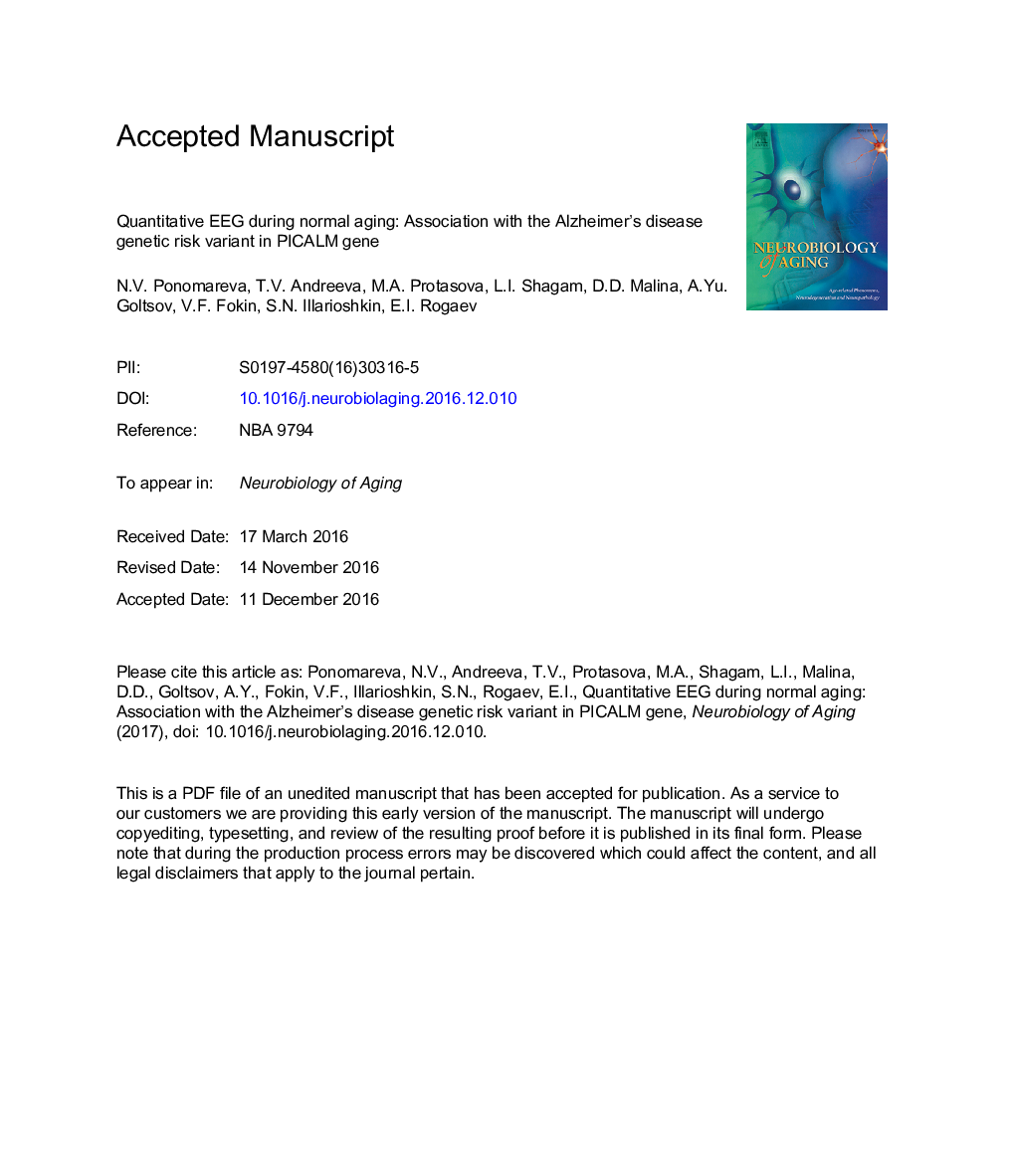| Article ID | Journal | Published Year | Pages | File Type |
|---|---|---|---|---|
| 4932789 | Neurobiology of Aging | 2017 | 30 Pages |
Abstract
Genome-wide association studies have identified novel risk variants for Alzheimer's disease (AD). Among these, a gene carrying one of the highest risks for AD is PICALM. The PICALM rs3851179 A allele is thought to have a protective effect, whereas the G allele appears to confer risk for AD. The influence of the PICALM genotype on brain function in nondemented subjects remains largely unknown. We examined the possible effect of the PICALM rs3851179 genotype on quantitative electroencephalography recording at rest in 137 nondemented volunteers (age range: 20-79Â years) subdivided into cohorts of those younger than and those older than 50Â years of age. The homozygous presence of the AD risk variant PICALM GG was associated with an increase in beta relative power, with the effect being more pronounced in the older cohort. Beta power elevation in resting-state electroencephalography has previously been linked to cortical disinhibition and hyperexcitability. The increase in beta relative power in the carriers of the AD risk PICALM GG genotype suggests changes in the cortical excitatory-inhibitory balance, which are heightened during normal aging.
Related Topics
Life Sciences
Biochemistry, Genetics and Molecular Biology
Ageing
Authors
Natalya V. Ponomareva, Tatiana V. Andreeva, Maria S. Protasova, Lef I. Shagam, Daria D. Malina, Andrey Yu. Goltsov, Vitaly F. Fokin, Sergey N. Illarioshkin, Evgeny I. Rogaev,
